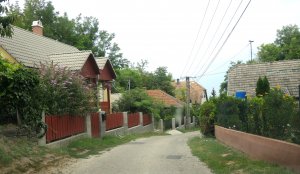Presented By: Center for Russian, East European, and Eurasian Studies
CREES Noon Lecture
Natural Materials and the Matter of Nation in Hungarian Home Decorating

Krisztina Fehérváry, associate professor of anthropology, U-M
Drawing on the arguments from her recent book, Politics in Color and Concrete (2013), Fehérváry will discuss the relationship of architecture and home furnishing to political sentiments in Hungary over the past half century. This account centers on the role of the concrete block apartment buildings that came to dominate the landscape throughout state-socialist eastern Europe and the aesthetic styles that emerged in opposition to it. Discontent with the state socialist regime became inseparable from discontent with its modernist housing forms, and a shared “organicist” aesthetic emerged in the way families furnished their homes inside these rectilinear buildings. This organicist aesthetic included an affection for natural materials as well as “folk” artifacts, weathered by time or crafted with traditional methods. But far from being aligned with a backwards-looking nationalism, the style united elements of peasant artisanal traditions with the informality and open qualities of modern design.
After the regime change of 1989, the “folk” elements of this style became intensely politicized by state nationalism. A professionally-designed “organicist architecture” became the symbol of the newly independent nation-state and the only architectural style appropriate for new churches. Organicist décor, meanwhile, was transformed from do-it-yourself production into upscale commodities purchased by the emerging middle classes. On the one hand, this organicist aesthetic has encompassed divergent political orientations, including populist right, a neoliberal left, and environmentalist alternatives. On the other, the continuing attachments to such organicism contribute powerful constraints on the kinds of politics possible in Hungary today.
Krisztina Fehérváry, associate professor of anthropology at the University of Michigan, received her Ph.D. from The University of Chicago. She is the author of Politics in Color and Concrete: Socialist Materialities and the Middle Classes (Indiana University Press, 2013). Her work on materiality, consumer culture, aesthetics, popular culture and socio-historical transformation, especially in socialist/post-socialist eastern Europe, has been published in journals such as Cultural Anthropology, Comparative Studies in Society and History, Social Identities, Ethnos and City and Society.
Drawing on the arguments from her recent book, Politics in Color and Concrete (2013), Fehérváry will discuss the relationship of architecture and home furnishing to political sentiments in Hungary over the past half century. This account centers on the role of the concrete block apartment buildings that came to dominate the landscape throughout state-socialist eastern Europe and the aesthetic styles that emerged in opposition to it. Discontent with the state socialist regime became inseparable from discontent with its modernist housing forms, and a shared “organicist” aesthetic emerged in the way families furnished their homes inside these rectilinear buildings. This organicist aesthetic included an affection for natural materials as well as “folk” artifacts, weathered by time or crafted with traditional methods. But far from being aligned with a backwards-looking nationalism, the style united elements of peasant artisanal traditions with the informality and open qualities of modern design.
After the regime change of 1989, the “folk” elements of this style became intensely politicized by state nationalism. A professionally-designed “organicist architecture” became the symbol of the newly independent nation-state and the only architectural style appropriate for new churches. Organicist décor, meanwhile, was transformed from do-it-yourself production into upscale commodities purchased by the emerging middle classes. On the one hand, this organicist aesthetic has encompassed divergent political orientations, including populist right, a neoliberal left, and environmentalist alternatives. On the other, the continuing attachments to such organicism contribute powerful constraints on the kinds of politics possible in Hungary today.
Krisztina Fehérváry, associate professor of anthropology at the University of Michigan, received her Ph.D. from The University of Chicago. She is the author of Politics in Color and Concrete: Socialist Materialities and the Middle Classes (Indiana University Press, 2013). Her work on materiality, consumer culture, aesthetics, popular culture and socio-historical transformation, especially in socialist/post-socialist eastern Europe, has been published in journals such as Cultural Anthropology, Comparative Studies in Society and History, Social Identities, Ethnos and City and Society.
Explore Similar Events
-
Loading Similar Events...
